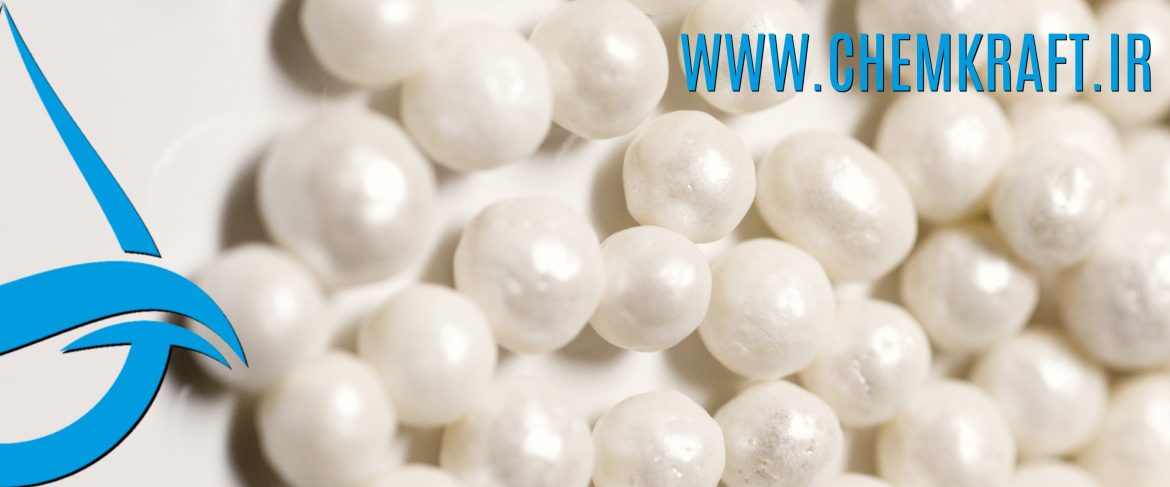APPLICATIONS OF CAUSTIC SODA PEARLS: VERSATILITY AND INDUSTRIAL SIGNIFICANCE
Hossein Moshiri

Introduction:
Caustic soda, also known as sodium hydroxide (NaOH), is a highly versatile and indispensable chemical with a wide range of applications across various industries. While it is available in different forms, including flakes and solutions, caustic soda pearls, or prills, represent one of the preferred solid forms due to their ease of handling and precise dosing capabilities. This essay explores the applications of caustic soda pearls, delving into their significance in diverse industrial processes.
Caustic Soda Pearls: An Overview:
Caustic soda pearls are solid, bead-like forms of sodium hydroxide. They are produced by processes that involve the generation of sodium hydroxide solution, which is then converted into pearls through techniques like prilling or pelletizing. The resulting pearls are spherical in shape, typically small in size, and have a smooth surface. This form of caustic soda offers several advantages in terms of storage, transportation, and controlled dosing in various applications.
Chemical Manufacturing:
- Soap and Detergent Production: Caustic soda pearls are a fundamental ingredient in the saponification process, where they react with fats and oils to form soap. The use of caustic soda in this application is critical for producing high-quality soaps and detergents used in household and industrial cleaning.
- Organic Chemical Synthesis: In the chemical industry, caustic soda plays a crucial role in various organic chemical synthesis processes. The pearls are used as a reactant in the production of chemicals such as dyes, pharmaceuticals, and synthetic fibers.
- Petroleum Industry: Caustic soda pearls find applications in the petroleum industry for processes such as refining and the production of certain drilling chemicals. They are used to neutralize acidic impurities and adjust pH levels in various stages of petroleum refining.
See also Chemicals used in the pulp and paper industry
Water Treatment:
- pH Adjustment: Caustic soda pearls are employed in water treatment plants to adjust the pH of water. The controlled addition of caustic soda helps neutralize acidic conditions, ensuring that water is within the desired pH range for safe consumption and industrial processes.
- Wastewater Treatment: In wastewater treatment, caustic soda is used to neutralize acidic effluents and control pH levels. This facilitates the removal of heavy metals and other pollutants, contributing to the environmental sustainability of industrial processes.
Pulp and Paper Industry:
- Digestion and Bleaching: Caustic soda is a key component in the pulping process, where it helps break down lignin and separate fibers from wood. Additionally, caustic soda is used in the bleaching of pulp to achieve the desired brightness in paper production.
- Effluent Treatment: In the pulp and paper industry, wastewater generated during various processes contains organic substances. Caustic soda pearls aid in the treatment of effluents, contributing to the overall environmental responsibility of paper mills.
Textile Industry:
- Fabric Mercerization: Caustic soda is utilized in the textile industry for fabric mercerization, a process that improves the luster, strength, and dye affinity of cotton fibers. The controlled use of caustic soda pearls ensures the desired fabric properties are achieved.
- Dyeing Processes: Caustic soda plays a role in the dyeing of textiles, helping to prepare fabrics for better color absorption. It is involved in processes that enhance the dyeing characteristics of various textile materials.
Alumina Industry:
- Alumina Production: In the production of alumina from bauxite, caustic soda is used to dissolve and separate aluminum hydroxide from impurities. This process is crucial in the aluminum industry for the extraction of aluminum metal.
See also Caustic Soda Market in Western Africa and ECOWAS: Opportunities and Challenges for Iran
Food Industry:
- Food Processing: Caustic soda is employed in the food industry for various applications, including the processing of certain food products. It is used for pH adjustment and as a cleaning agent in equipment used in food processing.
Safety Considerations: While caustic soda pearls are valuable in numerous applications, it is essential to highlight safety considerations associated with their handling. Caustic soda is a strong alkali and can cause severe burns and eye damage upon contact. Adequate safety measures, including the use of protective equipment and proper handling procedures, must be implemented in all applications involving caustic soda pearls.
Conclusion: Caustic soda pearls, with their unique characteristics and ease of application, play a vital role in a myriad of industrial processes. From soap and detergent production to water treatment, textiles, and chemical manufacturing, the versatility of caustic soda pearls is a testament to their significance in modern industrial practices. As industries continue to evolve, the demand for caustic soda pearls is expected to persist, making them an integral component in the advancement of various sectors while requiring careful consideration of safety measures to ensure responsible and effective use.
Hossein Moshiri
WA +989124311007
Source: https://chemkraft.ir/en/applications-of-caustic-soda-pearls/
Comments
Post a Comment